
Find out everything you need to know about the Mini Aussie when it’s fully grown. In this detailed guide, you’ll learn about Miniature Australian Shepherds’ size and personality, as well as how to take care of them, frequently asked questions, and true stories about real dogs.
Full Grown Mini Aussie The Complete Guide
Meet the Mini Aussie
If you’ve ever wanted an Aussie but in a smaller, more manageable size, here’s your dream dog: the Miniature Australian Shepherd (also known as the Mini Aussie). It’s with good reason that these little herders are shaking up the canine kingdom: not only do they possess all of the personality and drive of their full size cousins, but they also do so in short, pint-sized bodies that make life easier.
Quick Facts at a Glance
- Adult Size: (shoulder) 13-18 inches
- Weight: 20 to 40 pounds (females), up to 50 pounds (males)
- Coat: The medium-length double coat comes in black, blue merle, red and red merle, usually with white or copper markings.
- Temperament: Intelligent, energetic, loyal, affectionate although often reserved with strangers
- Exercise requirements: High – Minimum of 1-2 hours a day
- Life expectancy: 12–15 years
Why Mini Aussies Are Trending
The Mini Aussie is more than just good-looking’. Their popularity has skyrocketed in recent years, particularly among the kind of active urbanites and families who want a dog that can keep pace with their lifestyle — without leaving her on the couch taking up half of it. Social media has had a hand, as well, with countless Instagram and TikTok accounts celebrating these photogenic, expressive pups.
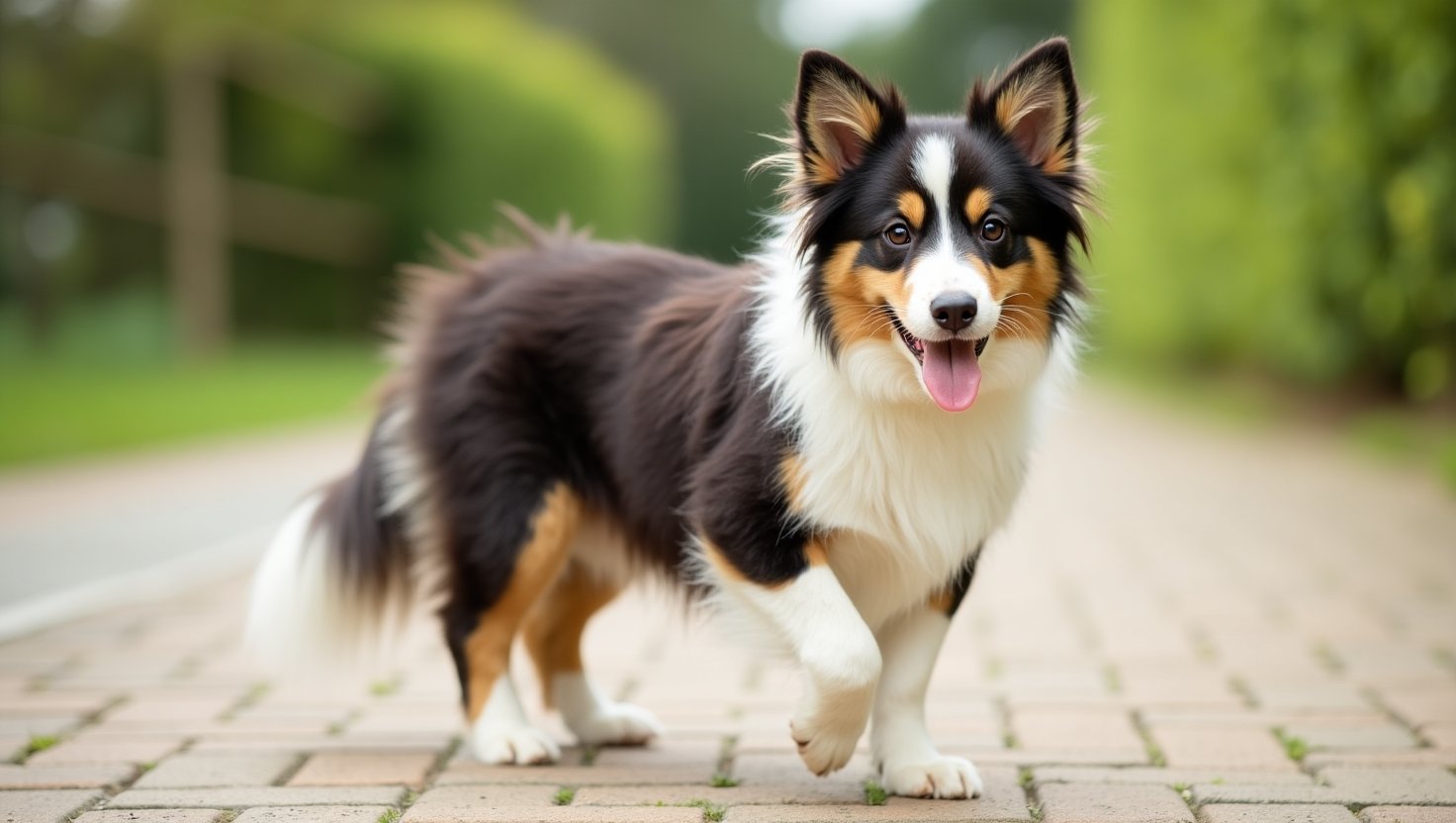
Small but mighty breeds have their moment well into 2025 with the Mini Aussie, who not only charms but is intelligent, agile and prone to adapting Adoptable on September 16. They’re not just an aesthetic — They’re a lifestyle for people who don’t ever want to adventure into the world without a sidekick and a shadow. Brown Poodle
What Does a Full Grown Miniature Australian Shepherd Look Like?
A full size Mini Aussie is a stunning dog. Imagine a quintessential Australian Shepherd as a scaled-down, more manageable dog — with all of the recognizable Aussie markings:
- Height: Small and muscular, at 13-18 inchesvip Pet 10.xamlvincia Cavalier King Charles Spaniel 01-2.
- Build: Well-proportioned, muscular, and agile
- Eyes: They are usually a bright blue, but may also be brown, amber, or, in a playful twist, they can be different colours.
- Coat: Long, double coat, not always clearly waved but soft to the hand
- Colors: Blue, merle, black or red, all trimmed with some quantity of white and/or copper markings
Their compact size means they’re also great for smaller houses or apartments, but don’t let this fool you — these dogs are high energy and need plenty of room to run.
Mini Aussie Development Puppy to Adult
Curious about when your Mini Aussie might stop growing? At 9–12 months, most Malamutes have reached their full height, though some do not reach full size until 18 months. Males can weigh up to 50 pounds, whereas females tend to top out at around 40 pounds.
Growth Milestones:
- 0 to 6 months: Explosive growth, lots of play, and limitless curiosity
- 6–12 months: Height even out, muscle develops
- 12-18 months: Fully adult in size and temperament
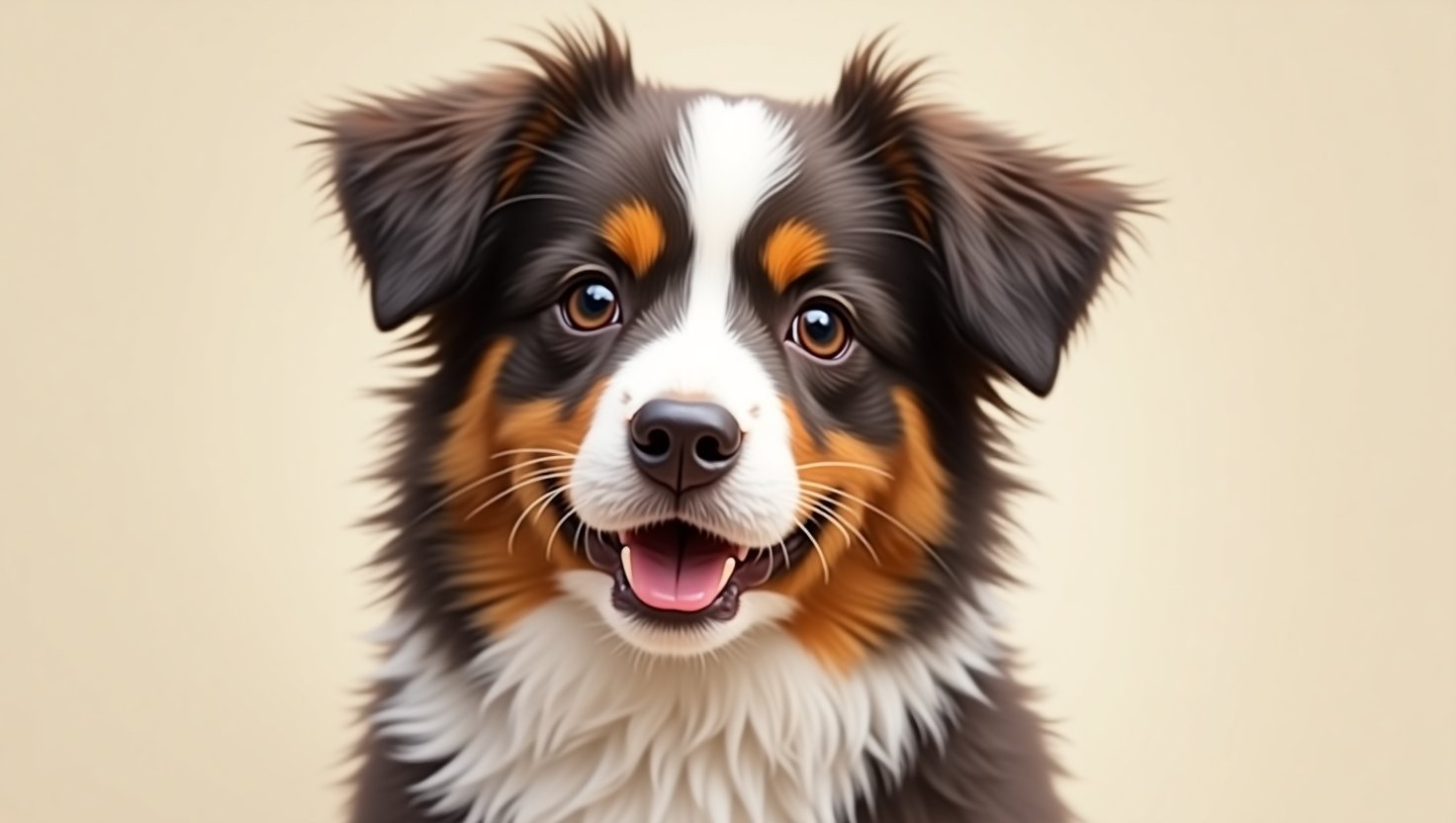
It’s really common for Mini Aussies to feel a little on the gangly side during adolescence, and yes, they will grow into their big paws!
What’s a Full Grown Mini Aussie Like to Live With?
Energy Levels & Exercise
Mini Aussies are the epitome of “high-energy.” They require at least one to two hours of exercise daily, and mental stimulation is as important to them as physical activity. With not enough to do, they’ll create it themselves—sometimes with your shoes or furniture.
Great activities for Mini Aussies:
- Long walks or jogs
- Agility courses
- Fetch and frisbee games
- Herding balls or toys
- Puzzle toys and training sessions
If you’re a runner, a hiker, or simply love the great outdoors, a Mini Aussie will be your best friend. But if you’re more the couch potato type, you might want to think twice about this breed—they don’t like boredom.
Temperament What to Expect
- Mini Aussie – The Adult The adult Mini Aussie is a contradiction in many ways:
- Good with family: They form deep attachments with their family, often choosing a “favorite human.”
- Reserved with strangers: Don’t expect them to give everyone the “Long Lost Friends” welcome. Early socialization is important to avoid shyness or suspiciousness.
- Incredibly intelligent: These dogs are quick learners, often too quick. They will develop both good and bad habits so training should be consistent.
- Very protective: Mini Aussies are natural watchdogs. They will alert you to anything out of the ordinary, but with nice training, nuisance barking can be minimized.
It’s said that they’re loyal to a fault, but they are not for anyone and everyone. They require a leader who offers structure, exercise and plenty of love.
Grooming and Care Tips
Coat Care
Mini Aussies shed throughout the year with heavier “blowouts” in the spring and fall. By brushing them regularly (at minimum, twice a week), their coat stays healthy and you’ll reduce the amount of shedding in your home. For daily healthy dog hair clean up in the house try to brush your dogs when shedding season is at it peak!
- Bathing: As little as possible — too much bathing can make their skin dry.
- Trim: Keep fur around paws and ears neatly trimmed.
- Nail care: Keeping her nails trimmed so they don’t split or cause her pain.
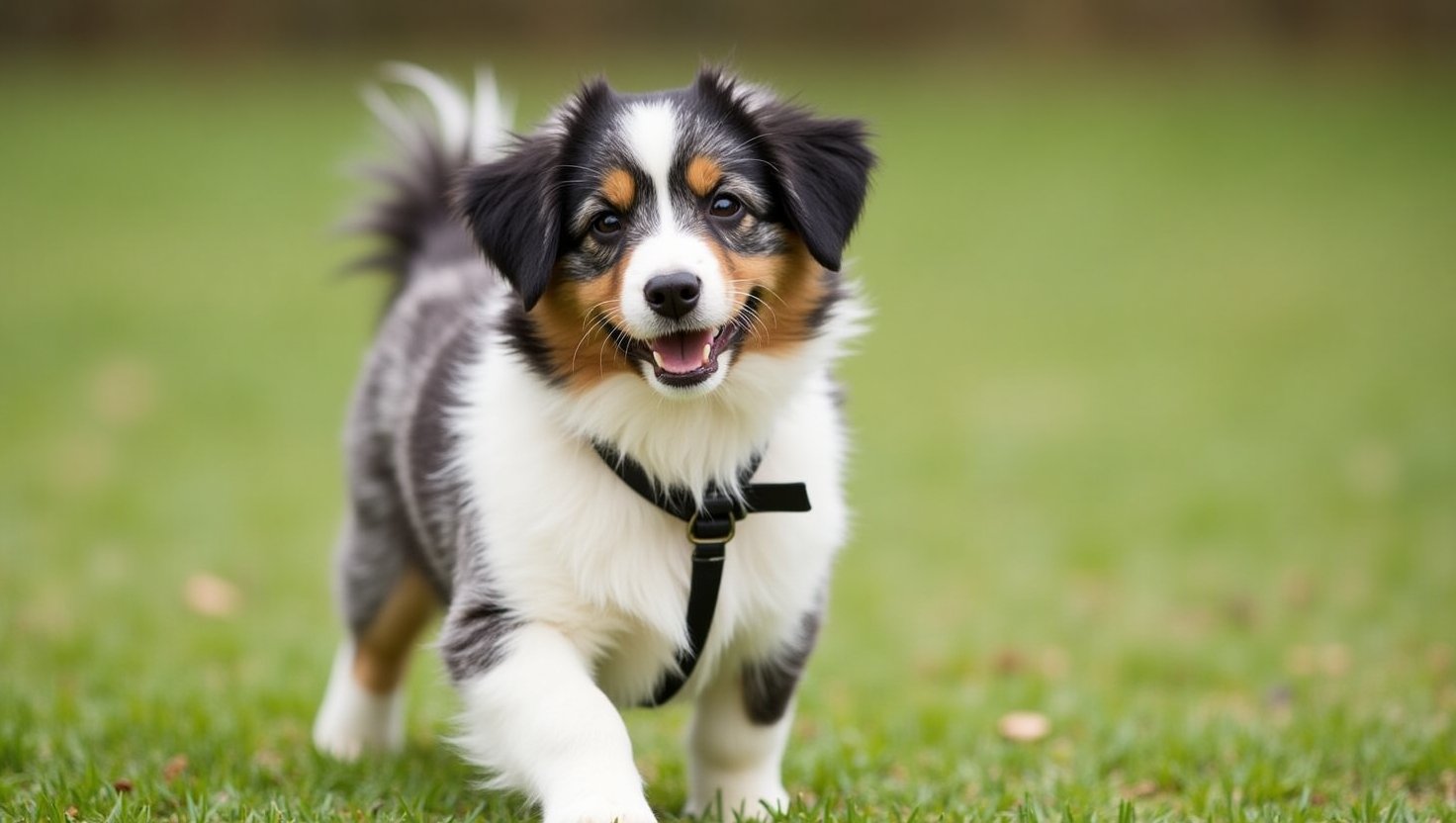
Health Considerations
Mini Aussies tend to be healthy, but all breeds have their share of genetic predispositions:
Hip dysplasia
Problems with the eyes (cataracts, progressive retinal atrophy)
Epilepsy
It is important to get your veterinarian to check your pet for signs of illness regularly. Responsible breeders screen their Mini Aussies for common health problems before breeding, so be sure to ask the breeder about the health and genetic history of both of the parents.
Real Life Miniature Australian Shepherd 24 Hours in a Day
There’s nothing better than waking up to a cold nose nudging your hand, a tail thumping in excitement. It’s time to rise and shine—and so is your Mini Aussie!
- Morning: A brisk walk and playing fetch in the park behind our house.
- Mid-morning: A little training session or puzzle toy time (they’re big on a click and a challenge).
- Afternoon: A nap in the sun and then play session two.
- Evening: Snuggle time on the couch while your Mini Aussie is cuddled up on your side, worn out from all the day’s activities.
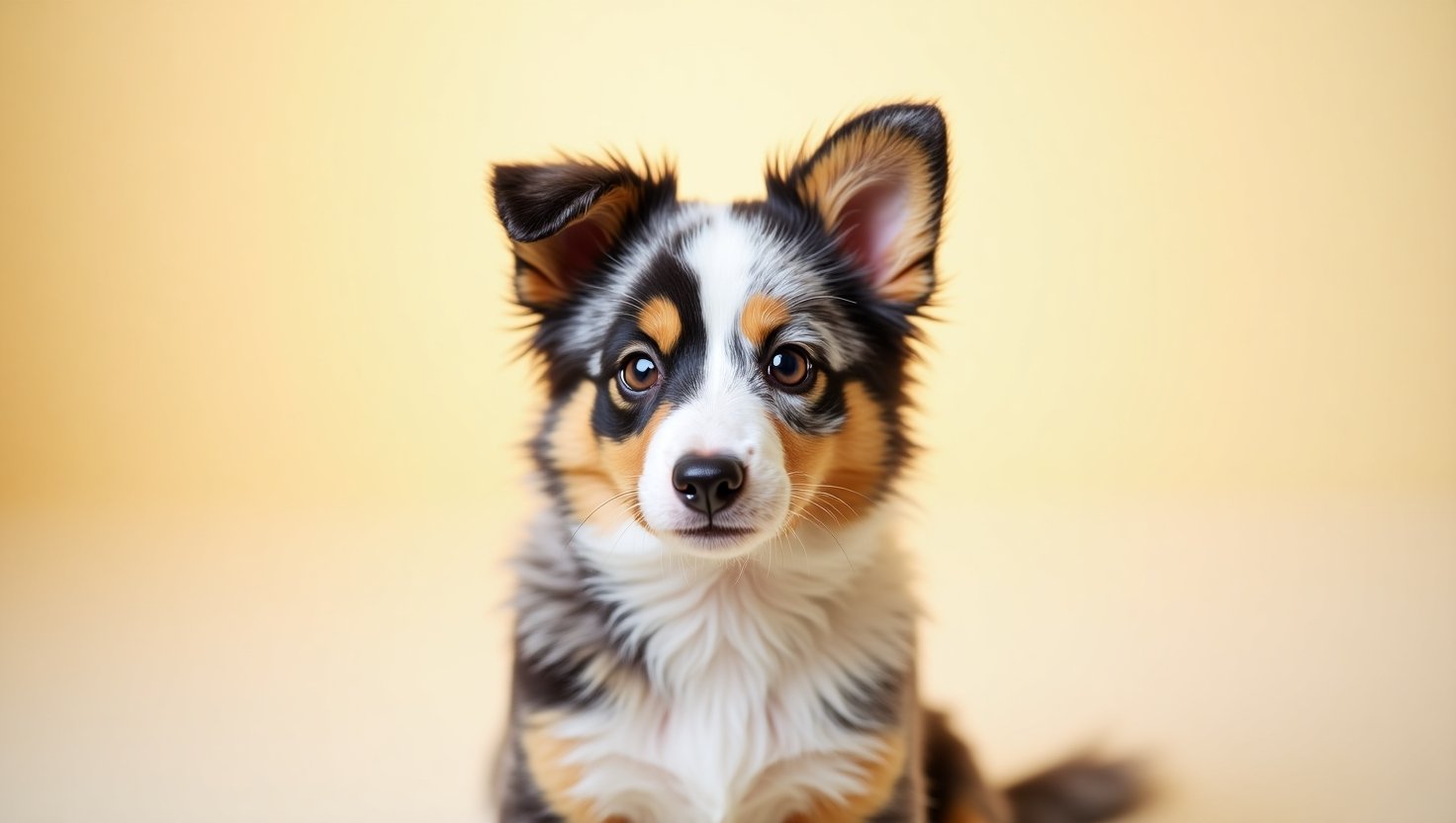
They’re fun, enthusiastic and loving in their routines. Again, every reopening day is a new day, every re-entry is another mouthful of heaving personality.
Mini Aussie FAQs
How big do Mini Aussies get?
Mature Miniature Aussies are 13 – 18” tall and weigh in at approximately 20 – 40 pounds but depends on their breeding line they can mature up to 50 lbs.
Do Mini Aussies Make Good Family Pets?
Absolutely! They’re loyal, loving, and good with kids — just make sure they get plenty of exercise and mental stimulation.
Do Mini Aussies get along with other animals?
With proper socialization, yes. Their herding instincts may activate, so beginning training negates any undesirable “herding” of cats or other small animals.
How much exercise should they get?
At least 1–2 hours daily. They appreciate a good walk or run or anything that uses their mind and body.
Is it easy to train a Mini Aussie?
They are very smart and want to please, which makes for fast learners. It’s all about consistency and positive reinforcement.
Do they bark a lot?
Mini Aussies are watchful and will bark to alert you to what’s going on. You can help curb excessive barking through training.
Miniature Australian Shepherd in the Modern World
Urban Living
Mini Aussies, thanks to their dimensions, can do well in apartments or smaller homes, provided their exercise needs are satisfied. They’re adaptable, but not low-maintenance. They are popular with city dwellers for their smarts and small size, but be ready to take them on daily strolls and jaunts to the park.
Family Life
They also are great family pets.Dogs. They are patient with kids, family-centric and eager to play. Just watch out for their herding instincts — they might round up the kids during backyard games!
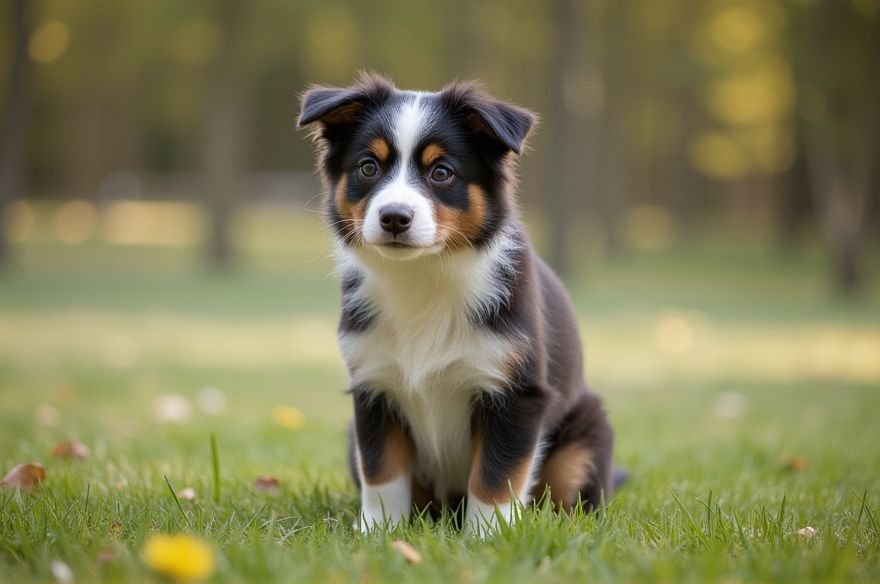
The Social Media Effect
Mini Aussies are ubiquitous online these days. With those features, they are Instagram and TikTok darlings. This visibility has driven demand, but it’s worth remembering that every dog is an individual — choose a breed for its temperament and needs, not just its viral appeal.
The Mini Aussie temperament The Mini Aussie is more than good looks!
Mini Aussies are not only cute — they’re complicated, sensitive and filled with, well, quirks. They’re often called “four-legged Einsteins” who have a sense of humor, owners rhapsodize. They’re silly, inquisitive and sometimes a little stubborn. They’re devoted and they’ll keep an eye on you wherever you go from room to room, always wanting to take part in whatever is going on.
How to Train a Miniature Australian Shepherd for a Happy Relationship
- Begin early: Start socialization and basic obedience as soon as you can.
- Minimize training sessions but make them fun: Mini Aussies love to be rewarded for good behavior.
- Exercise their brains: Train tricks, compete in agility or use puzzle toys.
- Be consistent: Establish and honor your boundaries.
- Incentivize good behavior: Treats, praise, and playtime can all help motivate.
Common Problems (and How to Solve Them)
- Separation anxiety: Mini Aussies form strong attachments and may have difficulty when they are left alone. Gradual feeding and interactive toys may help.
- Boredom: When there isn’t enough to keep them occupied, they’ll find something to destroy. Keep toys and activities rotating.
- Herding behavior: Rechannel with training and provide outlets for their instincts (radiant herding balls or agility).
Select a Mini Aussie Things to Consider
If you’re thinking about adding a Mini Aussie to your life, here’s what you need to know:
- STEP 2 Research breeders: Find ones who health test and emphasize temperament.
- Think about adoption: Many rescues specifically focus on herding breeds.
- Meet the parents: If you can, see the puppy’s parents for clues about temperament.
- Be prepared to commit: Members of the Mini Aussie crew require time and energy (and attention) to flourish.
Is the Grayscale Mini Australian Shepherd the Right Dog for You?
If you are looking for a dog that is clever, loyal, active, and always lively, then the Mini Aussie might just be your perfect match. Adopting That said, they aren’t for everybody — these dogs require structure, exercise and a lot of love. But in the right hands or home, they’re the ultimate sidekick: game for adventure, fiercely loyal, and sure to make you laugh.
Conclusion
Proof that big things do come in small packages, is the fully-grown Mini Aussie. It’s a well-rounded combination of the best of the herding dog, which possesses intelligence, a strong work ethic and trainable personality, and the smaller breed, which is portable and adaptable. Whether you’re hiking or cuddled on the couch, life with a Mini Aussie is never boring.
If you are ready for a four-legged companion that will tantalize, motivate and love you unconditionally the MIniature Australian Shepherd is waiting to win your heart.
Still Curious? More FAQs
What is the lifespan of a Mini Aussie?
Many spend 12–15 years as tennis buddies.
Do Mini Aussies shed a lot?
Yes, especially during seasonal changes. Regular brushing is a must.
Are they good for people who have never had a dog before?
They can be, with some serious training and exercise.
Ready to invite a Mini Aussie into your life?



Leave a Reply